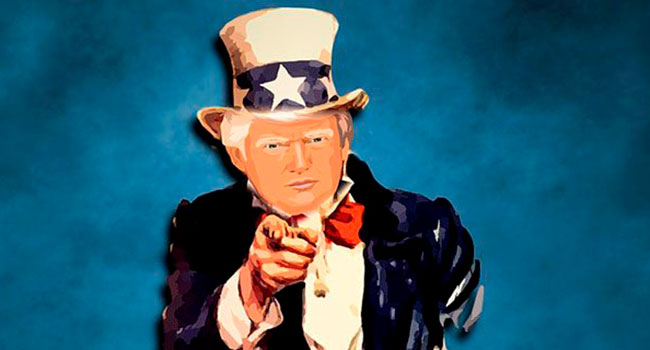 U.S. President Donald Trump’s legal team has launched over 40 lawsuits to contest the Nov. 3 election results. With some exceptions, most have either been withdrawn or dismissed.
U.S. President Donald Trump’s legal team has launched over 40 lawsuits to contest the Nov. 3 election results. With some exceptions, most have either been withdrawn or dismissed.
The exceptions include victories in the Pennsylvania Commonwealth Court, a filed case in Michigan’s U.S. District Court and Eastern District. Several other cases remain active.
As the states start to certify these results, Trump’s legal options are thin gruel.
The sitting president has reached a critical point where one of two political Hail Mary attempts will be launched shortly.
The most likely strategy involves the U.S. Supreme Court. His lawyers could file a case challenging the entire election under one large umbrella, or on a targeted basis involving a few states and/or regions.
If the nine Supreme Court judges feel there’s enough evidence of alleged electoral fraud on a widespread scale (which hasn’t been proven in the lower courts to date), they could agree to a hearing. That could delay the electoral college from meeting on Dec. 14 – for several days, weeks and possibly months.
The other strategy could be, of all things, the electoral college.
The popular vote doesn’t determine who the next U.S. president will be. Rather, each state legislature appoints electors who don’t hold federal office to cast the electoral votes. This includes the total number of senators (100) and house representatives (435), along with Washington, D.C.’s three electors.
How to curb your inner Donald Trump by Career columnist Rebecca Schalm
The 538 members of the electoral college make the final decision.
Most state governments have directed their electors to pledge to vote for the presidential candidate the voters in their state prefer. The vast majority have done this, but there have been faithless electors who went rogue and voted for other candidates.
There were 63 faithless electors in 1872 due to Liberal Republican/Democrat presidential candidate Horace Greeley’s death. In 1832, all 30 electors from Pennsylvania cast vice-presidential votes for Democratic House Representative William Wilkins rather than party candidate Martin Van Buren. And 18 electors refused to vote for Federalist presidential candidate John Adams’ running mate, Thomas Pinckney, in 1796. That meant Democratic-Republican presidential candidate Thomas Jefferson, who lost to Adams, ended up as vice-president.
Faithless electors were more common prior to the 20th century. Since 1912, there have only been 19 examples – although 10 of them occurred in 2016.
Democratic presidential candidate Joe Biden leads Trump 306-232 in the electoral college. If the same number of faithless electors from 2016 occurred this year and voted for Trump, it wouldn’t prevent a Biden victory.
But what if several states refused to send electors?
This is something Washington Post columnist and TV host Fareed Zakaria mentioned back in September. A short clip from his CNN show Fareed Zakaria GPS, which recently started circulating again, crafted a “legal and constitutional” way for Trump to win re-election without winning the presidential election.
Many states have passed legislation for electors to vote along the lines of the popular vote. “But those are laws,” Zakaria correctly noted, “not a constitutional obligation.” He illustrates a hypothetical scenario where Trump is ahead on Nov. 3 but Biden catches up. Republicans and Democrats file lawsuits against each other. With confusion in the air, state legislatures “decide to choose the electors themselves,” and that’s when things start getting interesting.
Zakaria devised an electoral map where there are nine swing states and eight of them have Republican legislatures. “If one or more decide that balloting is chaotic and marred by irregularities,” the TV host said, “they could send what they regard as the legitimate slate of electors.” In theory, there could be competing slates of electors fighting to vote in the electoral college.
That brings us to the next step. “Congressional Republicans could decide that disputed states should simply not be counted,” Zakaria noted. If Michigan’s votes were invalidated in his hypothetical model, no candidate would get to the required threshold of 270 votes. It’s then up to state delegations to decide who will be the next president.
Before Nov. 3, there were 26 Republican-controlled delegations and 23 Democratic-controlled delegations, with one tied. If each state voted along party lines, Trump would have been re-elected president.
The current state delegation count after Nov. 3 is 26-24, in favour of the Republicans.
Yes, it’s highly unlikely this scenario would occur. It would badly damage America’s democratic institutions for the foreseeable future. Nevertheless, it’s completely legal and the courts would be hard-pressed to overturn this decision.
“The system of electing the president is complicated because it was not designed to be directly democratic,” noted Zakaria.
Wouldn’t it be something if an election held in one of the world’s greatest democracies was decided in this manner?
Michael Taube, a Troy Media syndicated columnist and Washington Times contributor, was a speechwriter for former prime minister Stephen Harper. He holds a master’s degree in comparative politics from the London School of Economics.
For interview requests, click here. You must be a Troy Media Marketplace media subscriber to access our Sourcebook.
The views, opinions and positions expressed by columnists and contributors are the author’s alone. They do not inherently or expressly reflect the views, opinions and/or positions of our publication.


